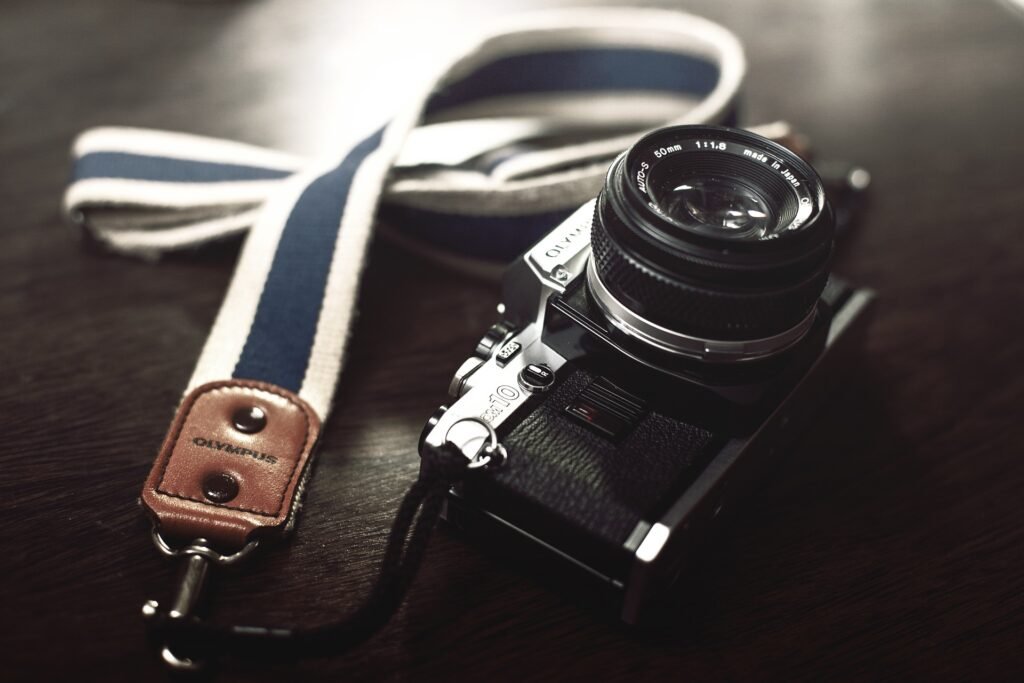Physical Address
304 North Cardinal St.
Dorchester Center, MA 02124
Physical Address
304 North Cardinal St.
Dorchester Center, MA 02124
The Olympus OM-1, introduced in 1972, was a revolutionary camera that redefined the concept of 35mm SLRs. Known for its compact size, mechanical reliability, and user-friendly design, the OM-1 quickly became a favorite among photographers of all levels. Even in 2024, the OM-1 remains a popular choice for film enthusiasts due to its lightweight body and mechanical operation. So, is it still a practical choice in today’s photography landscape? Let’s break down the pros and cons of the Olympus OM-1.

One of the most striking features of the Olympus OM-1 is its incredibly compact and lightweight design, especially when compared to other SLRs of its era, like the Nikon F3 or Canon AE-1. Weighing just around 510 grams (body only), it’s a breeze to carry around for long periods, making it ideal for travel, street, and documentary photography. Even in 2024, few film cameras offer such portability without sacrificing image quality.
The OM-1 is a fully mechanical camera, which means it can operate entirely without batteries, except for the built-in light meter. This feature is highly valuable for photographers who want reliability in all conditions, including remote locations where battery access might be limited. If the battery dies, you can still shoot as usual, unlike many electronic cameras that stop functioning altogether.
The OM-1’s viewfinder is one of the brightest and clearest among vintage SLRs, offering a significant advantage when composing shots and focusing manually. Olympus designed the OM-1 with a large and easily visible viewfinder that covers 97% of the image area. In 2024, when manual focusing is often overlooked in favor of autofocus, having such a bright viewfinder helps make manual shooting faster and more accurate.
The layout of the Olympus OM-1’s controls is intuitive and simple, designed with ergonomics in mind. The shutter speed dial is placed around the lens mount, a unique feature that some photographers love, as it allows for quick adjustments without taking your eye off the viewfinder. The controls are easy to use and feel natural in hand, making the OM-1 enjoyable to shoot with, even for long sessions.
Olympus OM-mount lenses, particularly those from the Zuiko line, are widely respected for their quality. Fortunately, they’re also relatively affordable compared to lenses from brands like Leica or Nikon. Even in 2024, you can find a wide variety of excellent prime and zoom lenses at reasonable prices, making it easier to build a versatile kit. The Zuiko 50mm f/1.8 is often regarded as one of the best budget lenses for film photography.
While the OM-1 is fully functional without batteries, the built-in light meter requires a 1.35V mercury battery, which is no longer available due to environmental concerns. In 2024, you’ll need to use modern alternatives like zinc-air or silver oxide batteries, which work well but may require some recalibration for accurate metering. Some users find these alternative batteries less reliable, making it essential to check compatibility before purchasing.
The OM-1 has a maximum shutter speed of 1/1000th of a second, which is slower than cameras like the Nikon F3 (which goes up to 1/2000th) or some modern digital cameras that reach 1/8000th of a second. While 1/1000th is sufficient for most situations, fast-action photography or shooting in bright sunlight with wide apertures can sometimes require faster shutter speeds. This limitation may frustrate photographers used to the broader shutter speed ranges of modern cameras.
In a world dominated by digital cameras with autofocus and auto-exposure, the fully manual nature of the Olympus OM-1 can feel restrictive, particularly for photographers who are used to modern conveniences. While many enthusiasts love the manual control and simplicity of the OM-1, those who prefer automation may find it challenging to adjust to setting exposure and focus manually.
As with any vintage camera, the OM-1 is decades old, and certain components may need servicing or replacement over time. Common issues include light seals that deteriorate and electronics like the light meter malfunctioning. While the OM-1 is relatively simple to repair compared to electronic cameras, finding technicians and parts is becoming more difficult and potentially costly in 2024.
Like many classic film cameras, the OM-1 lacks a built-in flash, which may be inconvenient for photographers who frequently shoot in low light or indoor environments. While the OM-1 features a hot shoe for external flashes, the absence of an integrated flash can be a downside for those who prefer an all-in-one package for casual shooting.
The Olympus OM-1 remains one of the most iconic 35mm SLRs ever made, and for good reason. Its compact size, mechanical reliability, and ease of use make it a fantastic choice for both beginners and seasoned photographers. In 2024, the camera still holds its own in the film world, offering a tactile, hands-on shooting experience that modern digital cameras rarely provide.
That said, the OM-1 isn’t without its limitations. The lack of automation, slower top shutter speed, and reliance on outdated battery types can make it less appealing to some users, especially those accustomed to modern cameras’ convenience. However, for those who appreciate the art of manual photography and crave a lightweight, durable camera, the OM-1 remains a top contender.
In 2024, the Olympus OM-1 continues to be a reliable, lightweight SLR that delivers excellent results. It’s perfect for photographers looking for a more hands-on, manual approach to film photography. Its aging components and lack of modern features may not suit everyone, but for those who appreciate simplicity and precision, the OM-1 is a solid choice.